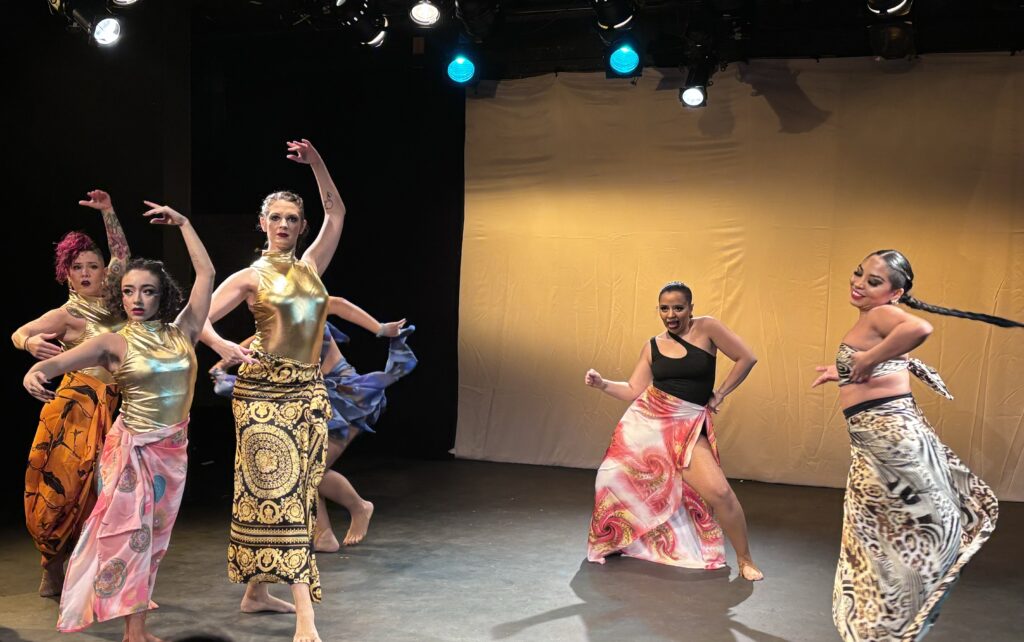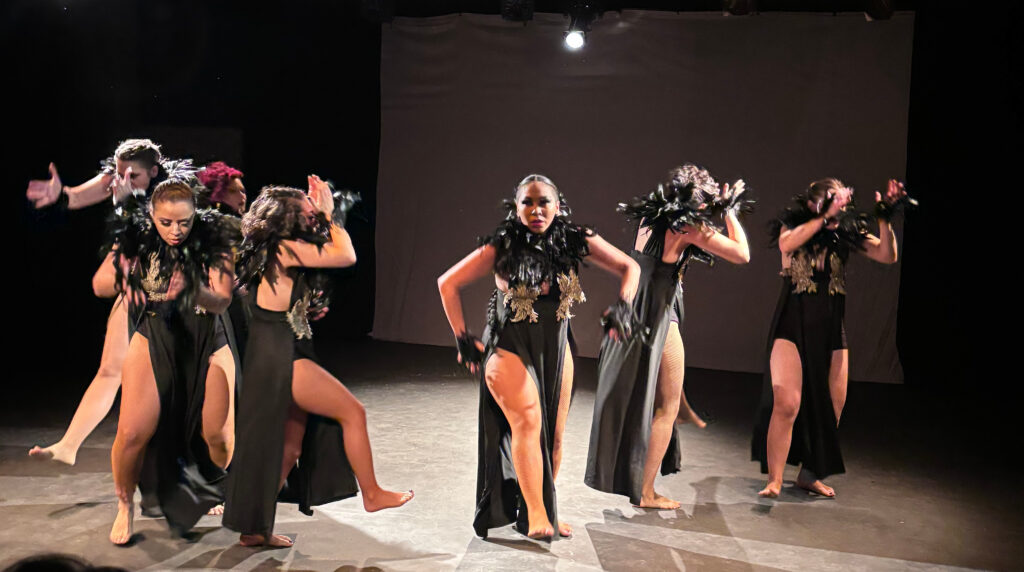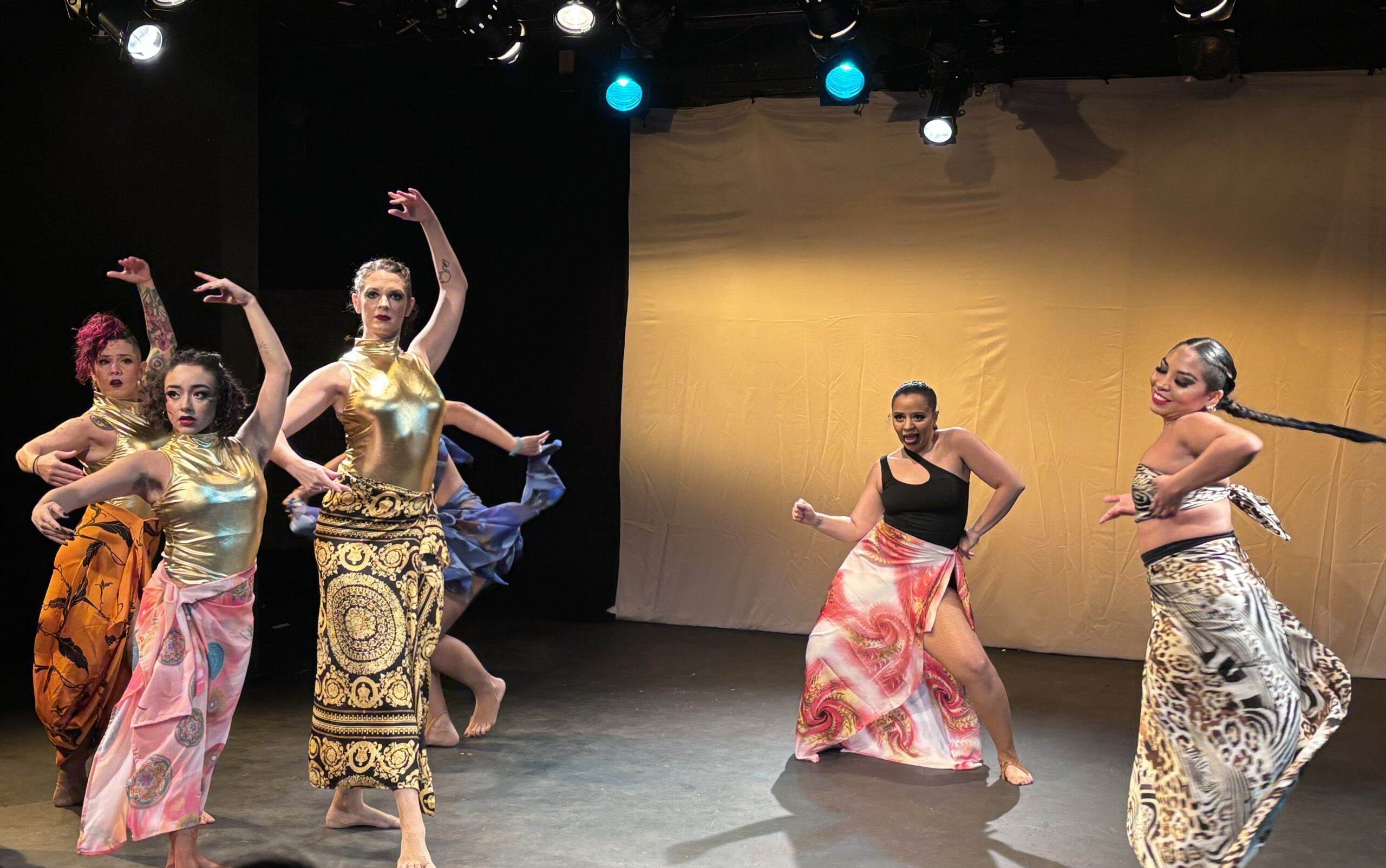Austin Oro Dance Company is a year-old Afro-Latin dance theatrical performance and training company in a much underfunded and almost vanishing cultural climate. The company pays homage to its members’ roots and brings traditional Caribbean dance melded from Cuban and African beats to audiences. Founders, Directors, and Choreographers Angeline Egea and Audrey Guerrero are a beautiful pair on and offstage who complement one another like the dance of swans.

The first of many performances, Hecha de Oro, was first performed on December 1 and 2nd. It is the story of the Yoruba deity of fertility, beauty, and love: Oshun. The Oshun is a prominent deity in the Yoruba religion, which originated in West Africa and is now practiced in various forms across the African diaspora. Oshun is revered as the goddess of rivers, love, fertility, and prosperity. Her story is deeply rooted in Yoruba mythology, and she holds a significant place in the pantheon of Orishas.
Oshun is often associated with the river and is considered the guardian of the Osun River in Nigeria. In Yoruba mythology, Oshun is depicted as a beautiful and compassionate deity known for her love of humanity and ability to bring healing and abundance.
The mythology surrounding Oshun often includes stories of her benevolent interventions in the lives of her devotees. One of the most well-known tales involves her providing fresh water to a community suffering from drought. Oshun is also associated with the arts, particularly music and dance, and she is often depicted adorned with gold, reflecting her connection to wealth and opulence.
While Oshun symbolizes love and fertility, her stories explore complex themes such as jealousy and sacrifice. She is revered through various rituals, ceremonies, and festivals. Oshun’s influence extends beyond Africa, as her worship has been carried to the Americas through the African diaspora, particularly in Afro-Caribbean religions like Santeria and Candomblé, where she is often syncretized with Catholic saints.
Hecha de Oro interprets Oshun as the disenfranchised’s voice and strength and creation’s sensuality and divinity. The dancers display all body shapes, sizes, and colors. They writhe, float, shimmy, and tap to flamenco, bachata, salsa, African and Latin beats. A Spanish-influenced, not-quite belly dance was intriguing. Could it have been Mexican or with Middle Eastern (Moorish) roots? The varied music set went from one song with the dancers changing costumes to the next in a string of unrelated stories. I Shazamed the music during the performance as I had never heard any of the music except for one track by Beyoncé. Ibeyi & Pa Salieu’s Made of Gold was set against golden skirts and skintight tops. Yendry’s song Barrio – A Colors Encore and Querait Lahoz’s Si la Luna Quiere touched me.

The performance had two acts. Most remarkable were the costume changes, at least ten times, one change per soundtrack recording. The dance styles loomed far and wide across the ocean. With time, stage practice, and dedication, I’m confident that the troupe will blossom into a giant presence and make their name known nationally and internationally. Meanwhile stay in touch for news on dance lessons in a variety of genres.
For more information please visit www.orodancecompany.com
